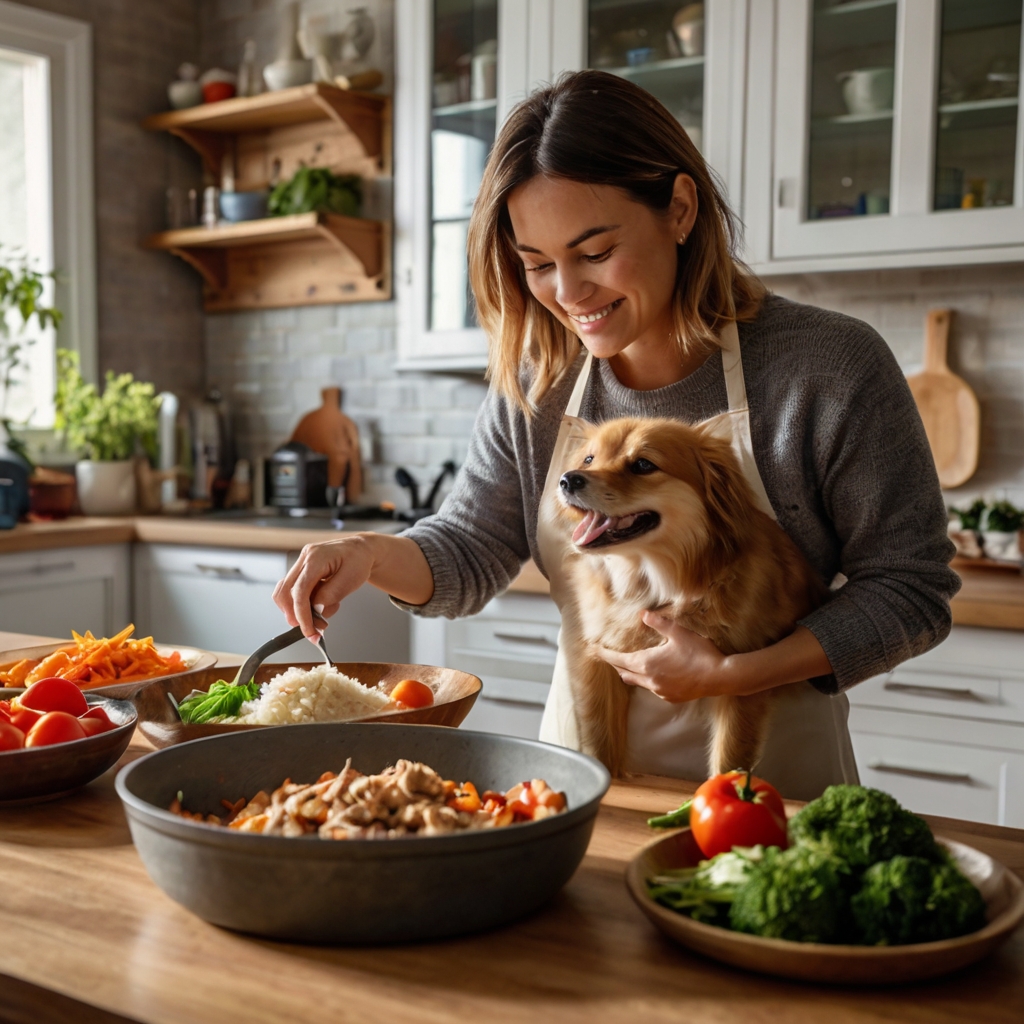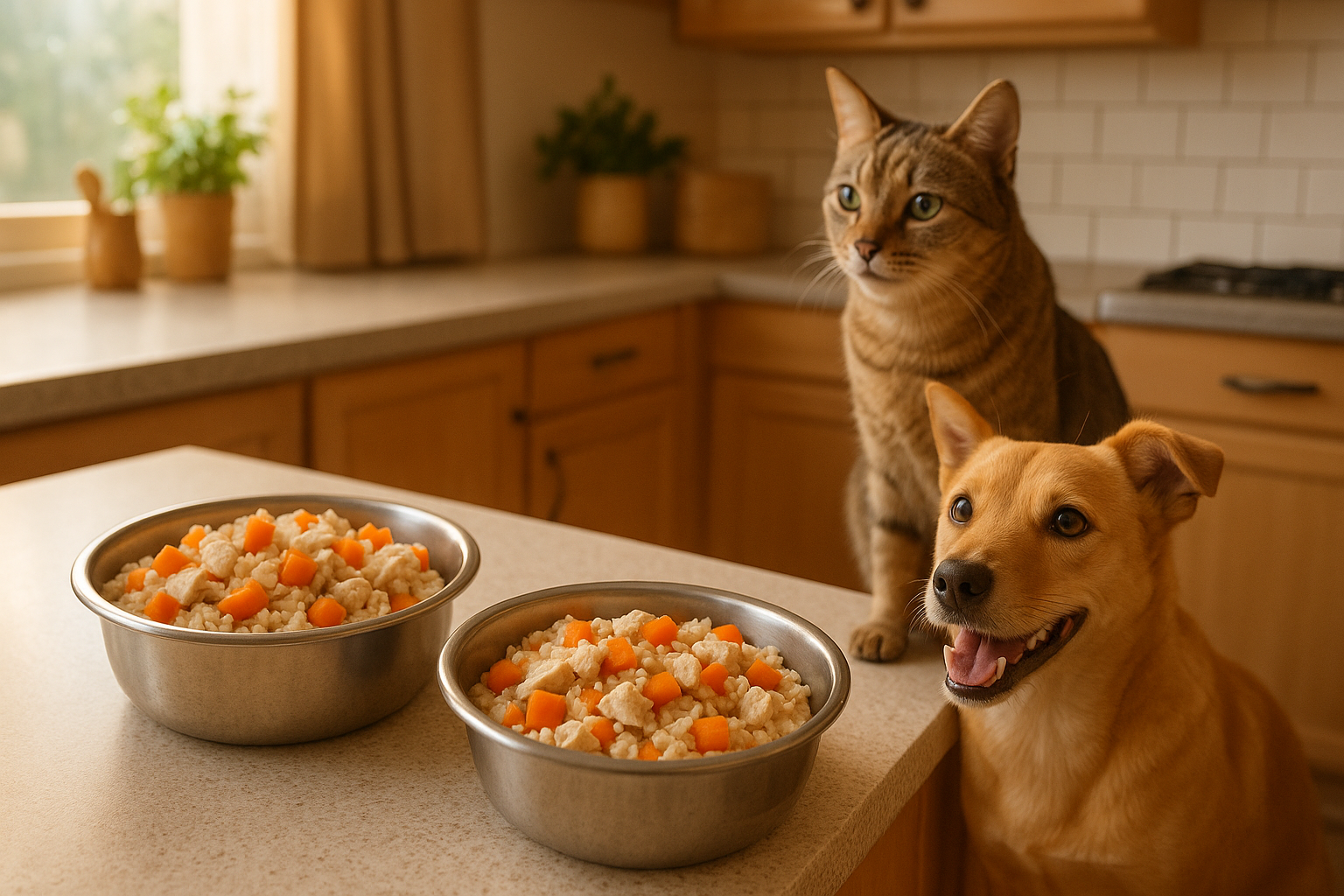Homemade Food for Pets: Healthy and Easy Recipes – Discover healthy and easy homemade food recipes for pets. Improve your dog or cat’s nutrition with vet-approved meals made at home.
More and more pet owners are turning to homemade food as a healthier, fresher, and more personalized option for feeding their furry companions. But how do you make sure these meals are nutritionally balanced, safe, and suitable for your pet?
This guide will walk you through everything you need to know about preparing healthy and easy homemade recipes for dogs and cats, including essential ingredients, vet tips, and sample meals your pet will love.
Homemade Food for Pets: Healthy and Easy Recipes – Why Choose Homemade Food for Pets?
Feeding your pet homemade food allows you to:
- Control the quality of ingredients
- Avoid harmful additives, preservatives, or allergens
- Customize meals for specific health needs (e.g. weight loss, kidney care)
- Bond with your pet through mealtime rituals
However, it’s essential to ensure the food you prepare meets your pet’s nutritional needs. Unbalanced meals can lead to long-term health issues.
Is Homemade Food Safe for Pets?
Yes—when done right. Consult your veterinarian or a pet nutritionist before making a complete switch to homemade food.
Risks of unbalanced homemade diets include:
- Calcium or phosphorus imbalances
- Vitamin deficiencies
- Protein overload in certain breeds or life stages
To avoid these risks:
- Use vet-approved recipes
- Add supplements when necessary
- Vary ingredients to cover all food groups
Ingredients You Can and Can’t Use
✅ Safe Ingredients for Dogs and Cats
- Lean meats (chicken, turkey, beef, lamb)
- Organ meats (liver, kidney—moderate amounts)
- Cooked eggs
- Brown rice, quinoa, oats
- Pumpkin, sweet potato, carrots, peas, spinach
- Apple (no seeds), banana, blueberries
- Plain yogurt (small amounts)
- Olive oil, fish oil
❌ Foods to Avoid
- Onions, garlic, leeks
- Grapes and raisins
- Chocolate, caffeine
- Xylitol (common in peanut butter)
- Raw dough or yeast
- Spices and salty seasonings
- Avocado (for some pets)
For a full list, check: ASPCA Toxic Food List
Sample Homemade Food Recipes for Dogs
🥩 Chicken & Veggie Bowl
Ingredients:
- 1 cup cooked chicken breast (shredded)
- 1/2 cup cooked brown rice
- 1/2 cup steamed carrots and peas
- 1 tsp fish oil
Instructions: Mix all ingredients, cool before serving. Store leftovers in fridge (max 3 days).
🐟 Salmon & Sweet Potato Mash
Ingredients:
- 1 cup baked salmon (boneless)
- 1/2 cup mashed sweet potatoes
- 1 tbsp olive oil
- 1 tbsp ground flaxseed
Instructions: Combine ingredients and serve once cooled.
Sample Homemade Recipes for Cats
🍗 Turkey & Rice Delight
Ingredients:
- 1/2 cup ground turkey (cooked)
- 1/4 cup boiled white rice
- 1 tsp pumpkin puree
- 1/4 tsp taurine supplement (essential for cats)
Instructions: Mix well. Cats can be picky—adjust texture to your cat’s preference.
🐔 Chicken & Egg Power Meal
Ingredients:
- 1/2 cup shredded chicken (cooked)
- 1 scrambled egg (no oil or salt)
- 1 tbsp cooked carrots (mashed)
- 1/2 tsp fish oil
Instructions: Blend lightly for a smooth texture.
Should You Cook Every Day?
Not at all. Here are some practical tips to make homemade feeding sustainable:
- Meal prep in batches (freeze portions)
- Use airtight containers and date labels
- Store in fridge for up to 3 days, or freeze for 2 weeks
- Always thaw thoroughly and serve at room temperature
How to Supplement Homemade Diets
You might need to add:
- Calcium powder (from eggshells or supplements)
- Taurine (for cats)
- Multivitamins (like VetriScience Canine Plus or Feline Complete)
- Probiotics for digestion
Consult your vet to know the right quantities and frequency.
How to Transition from Kibble to Homemade Food
Transition gradually over 7–10 days:
- Start with 25% homemade + 75% current food
- Increase homemade proportion slowly
- Watch for signs of digestive issues
- Always have fresh water available
Homemade vs. Commercial: Pros and Cons
| Aspect | Homemade Food | Commercial Food |
|---|---|---|
| Control over ingredients | ✅ High | ❌ Low |
| Shelf life | ❌ Short | ✅ Long |
| Time required | ❌ More | ✅ Minimal |
| Customization for health | ✅ Excellent | ⚠️ Limited |
| Cost | ⚠️ Variable | ✅ Predictable |
Want to dive deeper? Read our full post: Homemade vs. Commercial Pet Food: Which One Is Better?
Final Tips Before You Start
- Work with a veterinarian to design your pet’s plan
- Keep a food diary to track what works best
- Rotate ingredients weekly to keep it balanced
- Be aware of calorie count to avoid overfeeding
Final Thoughts
Homemade food for pets can be a wonderful, nutritious, and loving choice—when done responsibly. With the right recipes, ingredients, and guidance, you can offer your pet delicious meals that contribute to a long and happy life.


